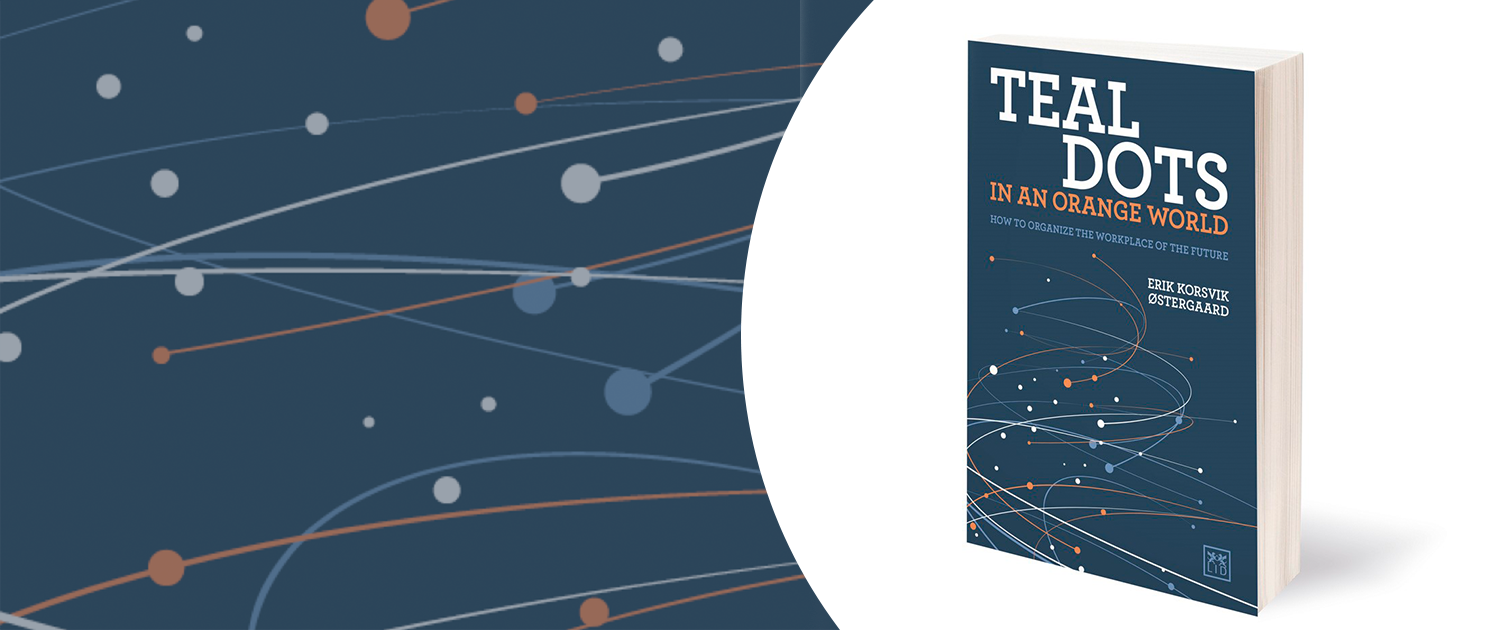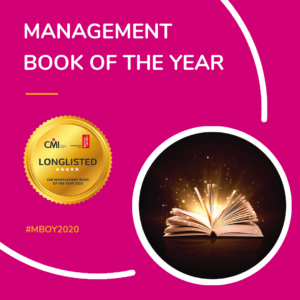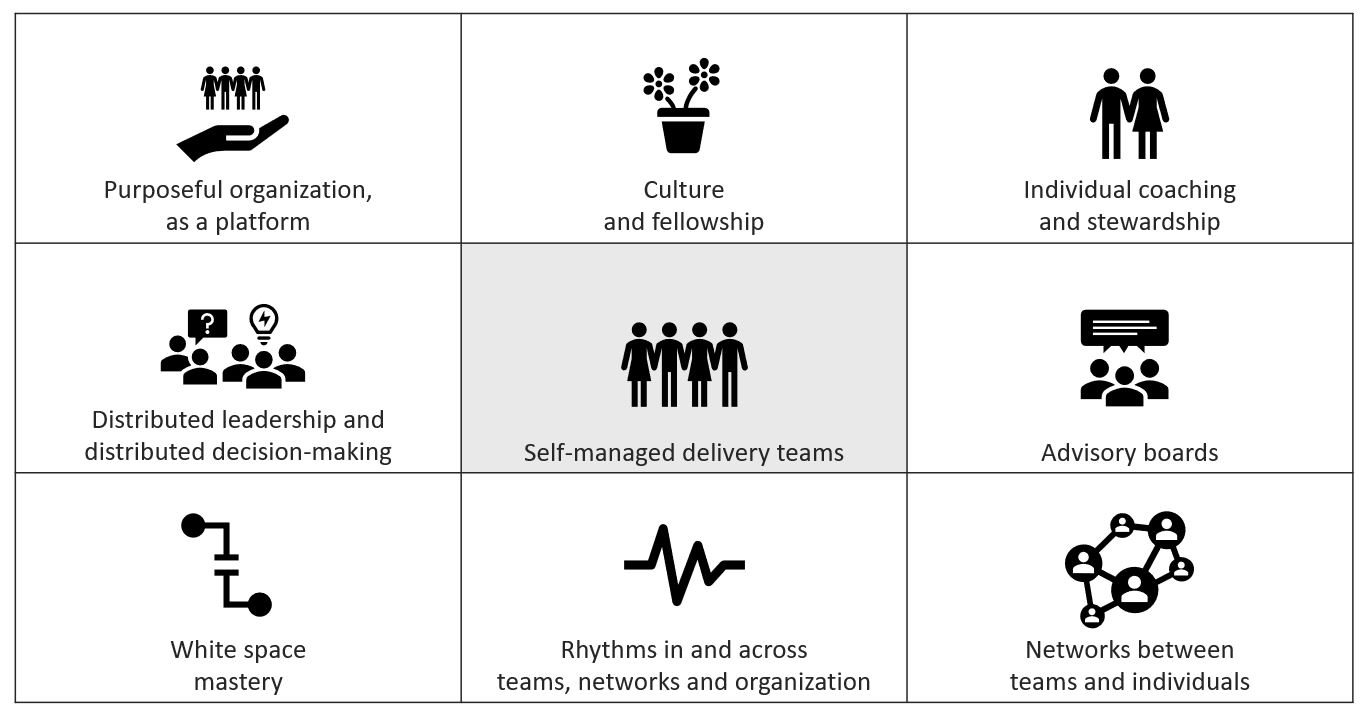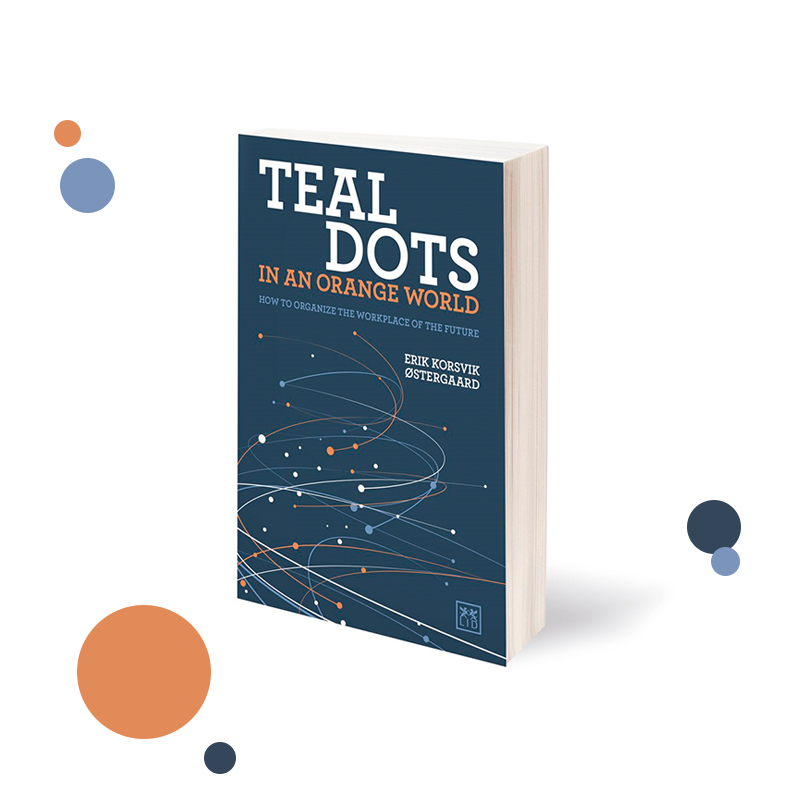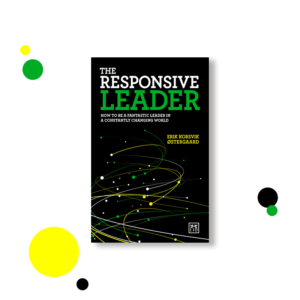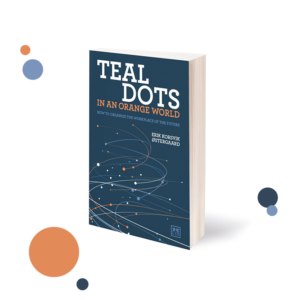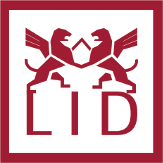Nominated by CMI, UK:
Management Book of the Year 2020 in the ‘Business and Leadership Transformed’-category
Why should you read this book?
The business world is changing. New kinds of organizations are emerging, and everybody is talking about or experimenting with sociocracy/holacracy, agile, lean startup, or teal. The challenge is, that these structures are extremely hard to scale to massive corporate businesses, with thousands of employees.
This book addresses exactly this:
How do you create an organizational platform, so that new and modern organizational “dots” can emerge and live on this platform; dots, that are based on teal-like methodologies? And, what leadership is required?
The nine-element model for the ecosystem of the modern organization. The book goes in-depth with each element, including case studies and real-life examples.
‘Teal Dots’ in the media:
Article in CEO World:
How to be a Chief Ecosystem Officer
Blog post, Global Peter Drucker Forum:
The rhythm of the ecosystem
Article in Fair Observer:
How to Keep Your Business in Sync With a Changing World
Blog post:
How to lead an ecosystem
Featured in HRDirector
(physical only)
Featured in SCENARIO Magazine
(physical copy)
“A very practical and modern approach to building future organizations”
“An actionable education and refreshing thinking on how you can change organizations for better results while focusing on the areas of business that matter.”
“This book provides an insightful and practical approach for creating more humanized organisations. I warmly welcome it!”.
“Teal Dots gives much needed tools, and voice, to the people who want to kickstart the transformation from a hierarchy to a decentralized, transparent organization. Many don’t have the power the top boss has, but they can nevertheless stir the revolutionary embers by giving people a chance to experience being an adult at work. To own their work, to take command of it, and make it meaningful.
Featuring case studies from Microsoft Denmark, Ørsted, TrustWorks, and Pingala.
New ways of working are emerging
The content and message of the book reflects four observation based on at least 15 years of working in corporate enterprises:
- Getting extraordinary things done in the modern corporate world happens in small teams only
- Work happens in highly connected networks
- Tactical execution happens when the touchpoints are frequent and physical
- The reorganization as an activity is a pivot point for transformational leadership
These observations are uncorrelated to the size and impact of the organization: Success is not an attribute of corporate collaboration, but of small self-managed teams in a teams-of-teams structure – hence teal dots in an orange world: Self-propelled teams in a universe of minimal corporate support.
What is in it for you?
Where “The Responsive Leader” set the scene, describing the paradigm shift towards the future organizations, “Teal Dots in an Orange World” will address how to create that structure:
- The design of Teal Dots (small teams)
- The design of the modern Orange World (the minimal corporate support)
- How to distribute projects and activities in a new way
- How to redesign the corporate rhythm
- How to handle the space and network between the teams
- How to master and lead the elements of the ecosystem
- Which corporate skills and capabilities that are needed
- How to design the paradigm shift and execute it
- And thus: How to handle tactical execution in an ever-changing world
The title refers to the work done by Frederic Laloux in his book “Reinventing Organizations”, where he describes five organizational stages (Red, Amber, Orange, Green, Teal): Orange being the classical corporate structure; teal being the modern team-oriented organism.
New ways of working are emerging
The content and message of the book reflects four observation based on at least 15 years of working in corporate enterprises:
- Getting extraordinary things done in the modern corporate world happens in small teams only
- Work happens in highly connected networks
- Tactical execution happens when the touchpoints are frequent and physical
- The reorganization as an activity is a pivot point for transformational leadership
These observations are uncorrelated to the size and impact of the organization: Success is not an attribute of corporate collaboration, but of small self-managed teams in a teams-of-teams structure – hence teal dots in an orange world: Self-propelled teams in a universe of minimal corporate support.
What is in it for you?
Where “The Responsive Leader” set the scene, describing the paradigm shift towards the future organizations, “Teal Dots in an Orange World” will address how to create that structure:
- The design of Teal Dots (small teams)
- The design of the modern Orange World (the minimal corporate support)
- How to distribute projects and activities in a new way
- How to redesign the corporate rhythm
- How to handle the space and network between the teams
- How to master and lead the elements of the ecosystem
- Which corporate skills and capabilities that are needed
- How to design the paradigm shift and execute it
- And thus: How to handle tactical execution in an ever-changing world
The title refers to the work done by Frederic Laloux in his book “Reinventing Organizations”, where he describes five organizational stages (Red, Amber, Orange, Green, Teal): Orange being the classical corporate structure; teal being the modern team-oriented organism.
About Erik Korsvik Østergaard
Erik Korsvik Østergaard (b. 1973) is partner in Bloch&Østergaard, which he founded in 2014. He holds a degree as Master of Science (M.Sc.) from the Technical University of Copenhagen with a thesis in chaos mathematics, and has an EBA in cross-cultural project management.
Erik has worked with leadership, digitization, strategy, change management, and organizational transformation in +15 years, as manager, project manager, and consultant – and has a burning passion for leadership and engagement.
Over the past years Erik has focused on codifying the mechanisms for the future of work, striving to establish a leadership framework that provides the modern organizations and leaders with a coupling between megatrends, theory, and real-life practice. This has led to a line of correlated models for strategy execution, innovation in daily-life, culture, and the networked organization, which has been justified in a long number of situations in both large, international organizations, and in scale-up companies. Combined, this has provided good, measurable results; especially on people analytics.
The four key findings in his work is gathered in his book “The Responsive Leader”, published February 2018 via LID Publishing, and includes three cases of modern organizations.
In addition, he acts as a mentor, speaker, inspirator, and motivator. He is a regular guest lecturer at Copenhagen Business School (CBS), and is also a keen jazz pianist, songwriter, and singer.
